Sovcomflot's LNG-fueled Tanker to Cross NSR
Sovcomflot’s LNG-fuelled Aframax crude oil tanker Korolev Prospect has started a transit through the Northern Sea Route (NSR).Korolev Prospect will become the first such large-capacity crude oil tanker to travel the entire length of the Northern Sea Route using only cleaner-burning LNG fuel.The tanker is delivering a cargo of crude oil from the port of Murmansk to China. The journey along the NSR, from Cape Zhelaniya to Cape Dezhnev, will take about eight days, with vessel moving at the expected average speed of 12 knots.While transiting from the Laptev Sea to the East Siberian Sea, the vessel will follow the ‘Tikhonov’ deep-water route that lies north of the New Siberian Islands…
Arctic: ExxonMobil Exits, Rosneft Goes Ahead
Russian state oil company Rosneft will continue geological explorations in the Arctic offshore zone after ExxonMobil quits the joint projects, reports TASS. The report qouted Natural Resources Minister Sergey Donskoy saying that the Arctic licenses will remain with Rosneft and the company "plans to continue to operate there". Exxon Mobil decided to withdraw from the joint projects with Rosneft in late 2017 after Washington issued a legal act expanding against Russia. According to the document, in 2013 and 2014 Exxon Mobil and Rosneft created various entities for operations in oil exploration. In particular, the two companies agreed to work together on the shelf of the Kara Sea, the Chukchi Sea, the Laptev Sea & Black Sea.
Threat from wandering greenhouse gas
On the seafloor of the shallow coastal regions north of Siberia, microorganisms produce methane when they break down plant remains. If this greenhouse gas finds its way into the water, it can also become trapped in the sea ice that forms in these coastal waters. As a result, the gas can be transported thousands of kilometres across the Arctic Ocean and released in a completely different region months later. This phenomenon is the subject of an article by researchers from the Alfred Wegener Institute, published in the current issue of the online journal Scientific Reports. Although this interaction between methane, ocean and ice has a significant influence on climate change, to date it has not been reflected in climate models.
Arctic Sea Ice Melt Continues
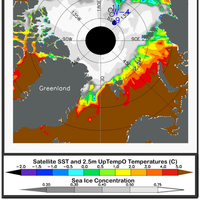
As of August 14, Arctic sea ice extent is tracking third lowest in the satellite record, according to the National Snow & Ice Data Center (NSIDC). The southern route through the Northwest Passage appears to be largely free of ice. Despite a rather diffuse ice cover in the Chukchi Sea, it is unlikely that Arctic sea ice extent this September will fall below the record minimum set in 2012. As of August 14, Arctic sea ice extent was 5.61 million square kilometers, the third lowest extent in the satellite record for this date and slightly below the two standard deviation range.
Arctic Sea Ice Melt at Higher Level
Sea ice is decreasing in the Arctic but year-to-year variability in sea ice extent is large. Ice extent is influenced by atmospheric circulation, with temperatures dictating ice melt, and winds shifting the ice, reports the Nature. According to National Snow and Ice Data Center, through the first half of July, Arctic sea ice extent continued tracking close to levels in 2012, the summer that ended with the lowest September extent in the satellite record. The stormy weather pattern that characterized June has persisted into July. Nevertheless, sea ice melt began earlier than average over most of the Arctic Ocean. As of July 18, Arctic sea ice extent was 7.82 million square kilometers (3.02 million square miles).
Two Product Tankers Collide in the Arctic
Two Product tankers, Svyatoy Petr and Svyatoy Pavel collided during a passage of Northern Sea Route in convoy with nuclear icebreaker Vaygach. The collision happened on 70 nautical miles SouthWest off New Siberian islands in Laptev sea. The both small clean product tankers (both 11,000, built 1992) are operated by Russia’s Morskoy Standart, according to reports. The both ships were proceeding in convoy one after another, when the tanker Svyatoy Petr got engine failuer and lost propulsion power and distance between both vessels was too short to prevent collision. After the accident the product tanker Svyatoy Petr suffered damaged bulwark in portside stern, while vessel Svyatoy Pavel got crack in starboard bow. There were no injuries reported.
Billions of Juvenile Fish under Arctic Ice
Using a new net, marine biologists from the Alfred Wegener Institute have, for the first time, been able to catch polar cod directly beneath the Arctic sea ice with a trawl, allowing them to determine their large-scale distribution and origin. This information is of fundamental importance, as polar cod are a major source of food for seals, whales and seabirds in the Arctic. The study, which was recently published in the journal Polar Biology, shows that only juvenile fish are found under the ice, a habitat the researchers fear could disappear as a result of climate change. Beluga whales, narwhals, ringed seals and numerous Arctic seabirds have one thing in common: their preferred food is polar cod, Boreogadus saida.
Arctic Bay is a Strait Proves Research Ship
The crew of the Admiral Vladimirsky research vessel during the second phase of its voyage has made a number of geographical and scientific discoveries in the Arctic, the press-service of the Baltic fleet reports via Arctic-info. During navigation along the Northern Sea Route, the vessel's crew was able to prove with the help of satellite photography that Krivosheina Bay of the Novaya Zemlya islands is actually a strait. The formation of a new cape has also been documented, which has been temporarily named Krugosvetka (circumnavigation). In addition, specialists received unique hydrographic and hydrological data on previously unexplored areas. The collapse and retreat of glaciers has been recorded, the height of which in 1952 was 100 meters.
Rosneft Restores Meteorological Observations System in Kara Sea
As part of a large-scale summer Arctic research expedition "Kara-Summer - 2014" a meteorological station was installed that meets the latest modern requirements for such equipment, on the island of Uedinenie. Thus, the expedition organized by the "Arctic Research and Development Center" (a joint venture of "Rosneft" and ExxonMobil), with the support of the specialists from the FGBI "Arctic and Antarctic Scientific Research Institute" has completed the restoration of the system of meteorological observations in the Kara Sea, where previously as commissioned by the Company three more stations were installed. This will allow supplying the region with a full-fledged complex of meteorological monitoring.
Gazprom & Rosneft Receive New Sites in the Arctic
The government supplemented the list of the subsoil sites of federal importance that are available for use without auctions. The Prime Minister of Russia, Dmitry Medvedev, signed the respective decree.The list includes the Pritaymyrsky subsurface site in the Laptev Sea, as well as the Kheysovsky site in the Barents Sea. The area of the Pritaymyrsky plot is 20,619,000 sq. km. The extractable reserves are estimated to be 104.6 million tonnes. Gas reserves total 362.8 billion cubic meters. The Kheysovsky site covers an area of 83,590,000 sq. km. Its recoverable oil reserves are estimated at 118.1 million tonnes. Gas reserves are 2.081 trillion cubic meters. The right to use the latter was received by Russian monopolist Gazprom. The owner of the Pritaymyrsky site is Rosneft.
Kara-Summer 2014 Arctic Field Expedition Started
The research and development expedition to investigate ice and metocean conditions in the Russian arctic organized by The Arctic Research and Design Center (the Rosneft and ExxonMobil JV) with the support of Arctic and Antarctic Research Institute experts has started in the White sea. Scientific research vessel Akademik Tryoshnikov departed the Arkhangelsk port to move along the route from the Kara Sea to the Chukchee Sea, virtually along the whole of the Russian Arctic coast. The comprehensive research expedition will last for 57 days. It will involve experts of Roshydromet, All-Russian Research Institute of Geology and Mineral Resources of the World Ocean named after academician Igor Gramberg and Institute of Geography of the Russsian Academy of Sciences.
Rosneft to Carry Out Ecologic Fishery Research in Laptev Sea
For the first time in history of Arctic Rosneft will carry out integrated ecologic fishery research on three licensed sites (LS) of Laptev Sea: Anisinsko-Novosibirsky, Ust’ Lensky and Ust’ Oleneksky. The Program of ecologic fishery research realization is the first and obligatory part of licensed sites water areas geologic research, which includes geological and ichthyological surveys. As a result of the research an integrated picture of original (background) ecological state will be received. The field investigations with two vessels will last for 90 days. In this period of time scientists and experts of Murmansk Marine Biological Institute Kola Scientific Center of Russian Academy of Sciences and State Oceanographic Institute named after N.
Kara-Winter-2014 Ice Expedition Successfully Completed
The Kara-Winter-2014 Ice Expedition organized by the Arctic Research and Design Center (a joint venture of Rosneft and ExxonMobil) with expert support from the Arctic and Antarctic Research Institute Federal State Budget Institution was successfully finished. It has become the largest expedition in the Arctic Ocean since the USSR collapse. Within 63 days scientists have been studying least developed areas of three northern seas: the Laptev, Kara, and East-Siberian Seas on board the Yamal Ice-Breaker. The works have been also carried out off the coast of Novaya Zemlya, Severnaya Zemlya archipelagoes, and De Long Islands. There have been carried out ice and meteorological measurements at 35 stations.
Ice – The Ship Hull Nemesis
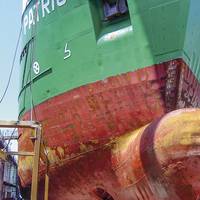
For as long as men have traveled and traded by water-routes, ice has been a nemesis for ships and their hulls. And with good reason since, on average, sea ice covers about 25 million square kilometers (9,652,553 square miles) of the planet—amounting to about two-and-a-half times the area of Canada. To wage ice battle, even in the earliest days of polar exploration, sailors used strengthened ships to ply icy waters. Naturally, these ships were originally wooden and based on existing designs but reinforced…
Tankship NSR Passage: All Alone Without the Icebreaker ...
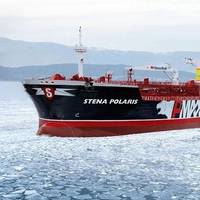
Stena Bulk’s tanker 'Stena Polaris', with a cargo of 44,000 tons of naphtha, is sailing from the Gulf of Finland via the North-East Passage to South Korea. The 'Stena Polaris' left Russian Ust Luga in the Gulf of Finland on 17 September 2013, and is expected to arrive at the port of Yosu in South Korea on 18 October. The voyage is a joint project between Stena Bulk and South Korean Hyundai Glovis. IcebreakerTaymyr is leading the way. However there is no more ice, only open water. So there is not really any need for the 36.8 MW nuclear icebreaker to escort us and the Boris Vilkicky any longer.
Drifting Arctic Tankship Gets Icebreakers Escort
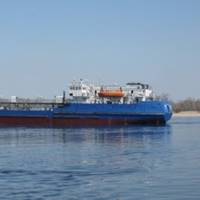
The “Nordvik”, which had been drifting in remote Arctic waters following a collision with an ice floe, is now being accompanied by icebreakers to its home port, reports the 'Barents Observer'. Citing the Russian Sea and River Transport Agency, Barents Obsever says that a total of 1800 litres of diesel oil was transferred from the “Nordvik” into the tanker “Boris Vilkitsky”. The two vessels are now accompanied by two nuclear-powered icebreakers, the “Taymyr” and the “Vaigach”, out of the Matisen strait, bound for the tankship's home port of Khatanga.
Damaged Northern Sea Route Tankship Awaits Help
The fully loaded 6403 dwt tankship "Nordvik” hit an ice floe and started taking in water while sailing the Northern Sea Route (NSR) last week and as a result a ballast tank was holed reports the Barents Observer. The hole has been plugged with a cement box and the water ingress has stopped, reports Barents Observer citing the (Russian) Federal Agency for Sea and River Transport. The vessel is now drifting in the Matisen Strait, where the accident happened, waiting for another tanker to come and take the cargo. The ship owner Khatanga Commercial Port is negotiating with nuclear icebreaker operator Atomflot to have the tanker escorted to port in Khatanga.
IMO Sec-Gen Up North in NSR Icebreaker
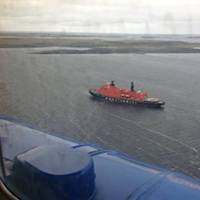
Koji Sekimizu, Secretary General of IMO is aboard the Russian icebreaker '50 Lot Pobedy' in company with Russian Deputy Minister Olersky to see for himself developments concerning the Northern Sea Route. I woke up at 07:00 this morning to the sound of the hull hitting ice. I realised that it was the ice and jumped off the bed to take a photo from my cabin window. The sea was not extensively covered by ice. We had left Dixon just a half day ago and we were navigating well into the Kara Sea. In the afternoon, we met a convoy led by another nuclear icebreaker, Yamal.
IMO Secretary-General to Make Arctic Voyage

IMO Secretary-General Koji Sekimizu departs later this week (Thursday, August 15) on a five-day Arctic sea voyage as part of a fact-finding mission to the region. Mr. Sekimizu will be the guest of the government of the Russia aboard the nuclear-powered icebreaker 50 Let Pobedy as she voyages on the Northern Sea Route that links Europe and northern Russia. Mr. Sekimizu will commence his voyage from the port of Dikson, in the Kara Sea, before undertaking a 1,680 nm trip to Pevek, in the East Siberian Sea.
Oil Majors Expand Far North Exploration Projects
Rosneft and ExxonMobil agree to collaborate in the search for offshore energy in the Russian Arctic & Far East, and Alaska. The two companies have agreed to expand their cooperation under their 2011 Strategic Cooperation Agreement to include an additional approximately 600,000 square kilometers (150 million acres) of exploration acreage in the Russian Arctic and potential participation by Rosneft (or its affiliate) in the Point Thomson project in Alaska. They have also agreed to conduct a joint study on a potential LNG project in the Russian Far East. The agreements, which include plans to explore seven new blocks in the Chukchi Sea…
Arctic Research Ship Scientists on Thin Ice

Return to Bremerhaven: The research vessel 'Polarstern' returns with new findings from the Central Arctic during the 2012 ice minimum. After a good two months. Since its departure from Tromsø (Norway) on 2 August 2012 Polarstern has travelled some 12,000 kilometres and conducted research at 306 stations. These included nine ice stations where the ship moored to an ice floe for several days to examine the ice, the water beneath it and the bottom of the sea. Many measurements were concerned with responses to the rapid retreat of the sea ice this summer.
Chinese Icebreaker Transits Northern Sea Route
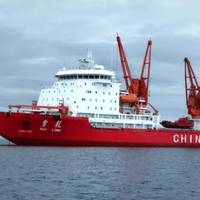
The icebreaker 'Xuelong' made the Arctic Ocean passage from China through to Norwegian waters. The Chinese icebreaker completed the Arctic North-East Passage marking the first such voyage by a Chinese vessel and opening an Arctic route connecting the Pacific and the Atlantic for future Chinese science expeditions. In completing the voyage, the icebreaker Xuelong or Snow Dragon channeled through five marginal seas of the Arctic Ocean: the Chukchi Sea, the East Siberian Sea, the Laptev Sea, the Kaka Sea and the Barents Sea.
Northern Sea Route Ice-free Soon?

The Northern Passage, the sea route along the North coast of Russia, is expected to be free of ice early again this summer. The forecast was made by sea ice physicists of the Alfred Wegener Institute for Polar and Marine Research in the Helmholtz Association based on a series of measurement flights over the Laptev Sea, a marginal sea of the Arctic Ocean. Amongs experts the shelf sea is known as an “ice factory” of Arctic sea ice. At the end of last winter the researchers discovered large areas of thin ice not being thick enough to withstand the summer melt.









